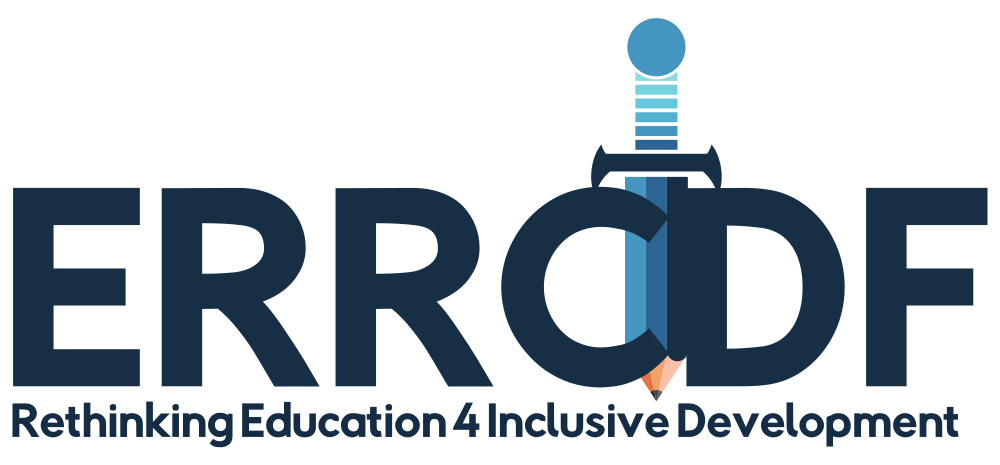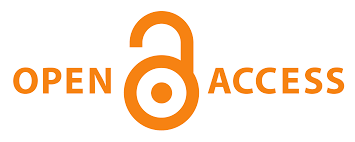An investigation of the impact of non-formal education on sustainable development in Mafeteng, Lesotho
DOI:
https://doi.org/10.38140/ijrcs-2023.vol5.04Keywords:
Non-formal education, training , empowerment, poverty alleviation, sustainable developmentAbstract
In the context of this study, non-formal training has been viewed as an intentional educational endeavour that frequently operates outside the traditional schooling system, with the curriculum and instructional systems tailored to the participants' particular needs and requirements. The study explored the relationship between non-formal education training and sustainable development. An interpretive paradigm was espoused in this study using a qualitative approach confined within a case study, and in-depth face-to-face interviews with three managers from one program of poverty reduction were selected. The other 18 beneficiaries participated in three focus group discussions made of six participants per group. Findings from face-to-face interviews revealed challenges that managers faced in convincing old and illiterate beneficiaries to adapt to modern agricultural trends, especially climate change and the preservation of seeds. Furthermore, findings from focus group discussions reveal a number of training difficulties faced by the beneficiaries, including low literacy levels, lack of efficient teaching techniques, insufficient time for beneficiaries to fully comprehend the concepts, information overload, and the frustration they experience during training. On these premises, the study thus recommends that beneficiaries should be actively involved in all decision-making processes in order to understand their requirements and preferences as well as the transparent use of funding.
References
Adams, S., Farrelly, T. & Holland, J. (2020). Non-formal education for sustainable development: A case study of the children in the Wilderness Eco-Club programme in the Zambezi region. Journal of Education for Sustainable Development, 14(2), 117-139. https://doi.org/10.1177/0973408220980871
Ali, A. C., & Sonderling, S. (2017). Factors affecting participatory communication for development: The case of a local development organization in Ethiopia. Malaysian Journal of Communication Jilid, 33(1), 80-97. https://doi.org/10.17576/JKMJC-2017-3301-06
Al-Nabae, M. G. & Sammani, D. (2019). Training methods for developing project team members. International Journal of Innovation and Industrial Revolution, 1(1), 01-12. https://doi.org/10.35631/IJIREV.11001
Anthony G. B., Akpama, S. I. & Tawo, C. N. (2021). Vocational education and training: An important tool for poverty reduction in Nigeria. https://Www.Researchgate.Net/Publication/356732614_Vocational_Education_And_Training_An_Important_Tool_For_Poverty_Reduction_In_Nigeria
Antwi-Agyei, P., Dougill, A.J. & Stringer, L.C. (2015). Barriers to climate change adaptation: Evidence from Northeast Ghana in the context of a systematic literature review. Climate and Development, 7, 297-309.
https://doi.org/10.1080/17565529.2014.951013
Aspers, P., & Corte, U. (2019). What is qualitative in qualitative research? Qualitative Sociology, 4, 39–160
Bardasi, E. (2013). Promoting women’s entrepreneurship: The Tanzania virtual business incubator. Presentation of project at midterm. World Bank.
Bertail, P., Chautru, E., & Clémençon, S. (2017). Empirical processes in survey sampling with (conditional) poisson designs. Scandinavian Journal of Statistics, 44, 97-111.
Blackburn, H. (2011). Millennials and the adoption of new technologies in libraries through the diffusion of innovations process. Library Hi Tech, 29(4), 663-677. https://doi.org/10.1108/07378831111189769
Bowman, P. (2010). Total quality management: An introductory text. Prentice Hall.
Braun, V., & Clarke, V. (2006). Using thematic analysis in psychology. Qualitative research in psychology, 3, 77-101. https://doi.org/10.1191/1478088706qp063oa
Byrne, D. (2021). A worked example of Braun and Clarke’s approach to reflexive thematic analysis. Quality and Quantity 56(2) 1391-1412. https://doi.org/10.1007/s11135-021-01182-y
Casserly, C. M. (2021). African-American women and poverty: Can education alone change the status quo?. Taylor & Francis. https://doi.org/10.4324/9781003248941
Clarke, V., Braun, V., & Hayfield, N. (2015). Thematic analysis. Qualitative psychology: A practical guide to research methods. (3rd ed.). Sage Publications.
Coun, M., Peters, P., Blomme, R., & Schaveling, J. (2022). To empower or not to empower, that`s the question. Using an empowerment process approach to explain employee`s workplace proactivity. The International Journal of Human Resource Management, 33 (14), 2829-2855 https://doi.org/10.1080/09585192.2021.1879204
Council of Europe. (2022). Formal, non-formal and informal learning. Linguistic Integration of Adult Migrants (LIAM). https://www.coe.int/en/web/lang-migrants/formal-non-formal-and-informal-learning
Dearing, J. W., & Cox, J. G. (2018). Diffusion of innovations theory, principles, and practice. Health affairs, 37 (2), 183–190. http://doi.org/10.1377/hlthaff.2017.1104
Dearing, J. & Lee, S. (2016). Diffusion of innovations: International encyclopedia of communication theory and philosophy. Wiley-Blackwell.
Denison, E.F. (2008). Sources of economic growth in the United States and alternative before US. The Penguin Press.
Dedehavir, O., Ortt, R., Riverola, C. & Miralles, F. (2017). Innovators and early adoptors in the diffusion of literature review. International Journal of Innovation Management, 21(2), 1740010. http://doi.org/10.1142/s1363919617400102
Etling, A. (1993). What is Non-formal education? Journal of Agricultural Education, 34(4), 72–76. http://doi.org/10.5032/jae.1993.04072
García?Avilés, J. A. (2020). Diffusion of innovation. The international Encyclopedia of media psychology, 1-8..https://doi.org/10.1002/9781119011071.iemp0137
Gill, P., & Baillie, J. (2018). Interviews and focus groups in qualitative research: An update for the digital age. British Dental Journal, 225(7), 668-672. https://doi.org/10.1038/sj.bdj.2018.815
Giovetti, O. (2022, April 17). How does education affect poverty? it can help end it. Concern Worldwide US. https://www.concernusa.org/story/how-does-education-affect-poverty/
Global Partnership for Education (2016). GPE 2020: Improving learning and equity through stronger education systems. Strategic plan 2016-2020. Global Partnership for Education. https://eric.ed.gov/?id=ED566670
Goodman C., & Evans, C. (2015). Focus Groups. Wiley Blackwell.
Guest, G., Bunce, A., & Johnson, L. (2006). How many interviews are enough? An experiment with data saturation and variability. Field methods, 18(1), 59-82. https://doi.org/10.1177/1525822X05279903
Alshenqeeti, H. (2014). Interviewing as a data collection method: A critical review. English linguistics research, 3(1), 39-45. https://doi.org/10.5430/elr.v3n1p39
Hanushek, E. A., & Woessmann, L. (2021). Education and economic growth. In Oxford Research Encyclopedia of Economics and Finance. Oxford University Press. https://doi.org/10.1093/acrefore/9780190625979.013.651
Hardianto, Y. (2013). Understanding of Participatory Communication for Empowerment and Development. Academia.edu. https://www.academia.edu/4624811/understanding_of_participatory_communication_for_empowerment_and_development
Ibrahim, A. (2012). Thematic Analysis: A critical review of its process and evaluation. West East Journal of Social Sciences, 1(1), 39-47.
IFAD. (2007). Mali Country Programme evaluation. IFAD. https://ioe.ifad.org/en/w/mali-country-programme-evaluation-2007-
IIEP. (2006). SACMEQ - from project to development model. IIEP News Letter.
Ionescu, F. (2020). Non-formal education approaches in school sorganisation methodological aspects and case study. Journal of Education, Society & Multiculturalism, 1(2), 1-14.
Islam, M. D. (2007). The innovative elements in Non-Formal education of Bangladesh: perspective of Income generating Programmes for poverty alleviation. International journal of Education and Development and Communication Technology, 3(3), 89-104.
Jepson, P. C., & Halbleib, M. L. (2015). Adapting an outcome-based education development process to meet near real-time challenges to sustainable agricultural production. Journal of Agricultural Education and Extension, 21(2), 109-126. https://doi.org/10.1080/1389224X.2014.927377
Johnson, M., & Majewska, D. (2022). Formal, non-formal, and informal learning: What are they, and how can we research them? Cambridge University Press & Assessment Research Report.
Kamol. J. (2011). Non formal skills training as a tool to combat poverty and unemplovment. In Samlowski, M. and Wascherk. G. (Eds) Adult Education and Development. Germany Dw International.
Knook, J., Eory, V., Brander, M., & Moran, D. (2018). Evaluation of farmer participatory extension programmes. Journal of Agricultural Education and Extension, 24(4), 309-325.
LaMorte, W. W. (2022). Diffusion of innovation theory. Boston University School of Public Health.https://sphweb.bumc.bu.edu/otlt/mphmodules/sb/behavioralchangetheories/behavioralchangetheories4.html
Lephoto, M. (1995). Educating women for empowerment in Lesotho. Convergence, 28(3), 5-13. https://eric.ed.gov/?id=EJ515601
Lindner, J., Clemons, C., Thoron, A., & Lindner, N. (2020). Remote instruction and distance education: A response to COVID-19. Advancements in Agricultural Development, 1(2), 53- 64. https://doi.org/10.37433/aad.v1i2.39
Lindner, J.R., Harder, A. & Roberts, T. G. (2020). Elevating the impacts of research in agricultural education. Journal of Agricultural Education, 61(2), 249-262. https://doi.org/10.5032/jae.2020.02249
Livingstone, D. (1999). Exploring the icebergs of adult learning: Findings of the first Canadian survey of informal learning practices. CJSAE, 13 (2), 49-72.
Mack, N., Woodsong, C., Macqueen, K., Guest, G. & Namey, E. (2005). Qualitative research methods: A data collector’s field guide. Family Health International.
Manyakiso, T., Barner, D. & Makhalane, V. (2009). Implementation of poverty alleviation projects: experiences of project members in Christ Hani District, Eastern Cape Provence. Journal of Public Administration, 44(1), 363-373.
Mefalopulos, P. (2003) Theory and Practice of Participatory Communication. The Case of the FAO Project Communication for Development in Southern Africa, (170). [Doctoral dissertation]. University of Texas at Austin.
Miles, M. B., Huberman, A. M., & Saldaña, J. (2014). Qualitative data analysis: A methods sourcebook. (3rd ed.). Sage publications.
Ministry of Local Government and Chieftainship (MoLGC) (2008). Mafeteng Local government district information Handbook.
Morris, T. H. (2019). Self-directed learning: A fundamental competence in a rapidly changing world. International Review of Education, 65(4), 633–653. https://doi.org/10.1007/s11159-019-09793-2
Omoniyi, M. (2013). Bullying in Schools: Psychological implications and counselling interventions. Journal of Education and Practice, 18, 70-78. https://doi.org/10.4236/psych.2012.38085
Patton, M. Q. (2015). Qualitative research & evaluation methods: Integrating theory and practice. SAGE Publications.
Pigozzi, M. J. (1999). Education in Emergencies and Reconstruction: A Developmental Approach. UNICEF. https://bettercarenetwork.org/sites/default/files/attachments/Education%20in%20Emergencies%20and%20for%20Reconstruction.pdf
Rogers, E. M. (2003). Diffusion of innovations. (5th ed). New York (NY): Free Press.
Radovi?, S., &Passey, D. (2016). Digital resource developments for mathematics education involving homework across formal, non-formal and informal settings. The Curriculum Journal, 27(4), 538–559. https://doi.org/10.1080/09585176.2016.1158726
Saunders, M., Lewis, P. & Thornhill, A. (2016). Research Methods for Business Students. (7th ed.). Pearson.
Scharp, K. M., & Sanders, M. L. (2018). What is a theme? Teaching thematic analysis in qualitative communication research methods. Communication Teacher, 33(2), 1-5. https://doi.org/10.1080/17404622.2018.1536794
Schugurensky, D. (2000). The Forms of Informal Learning: Towards a Conceptualisation of the Field. Ontario Institute for Studies in Education of the University of Toronto.
Scott, S., & McGuire, J. (2017). Using Diffusion of innovation theory to promote universally designed college instruction Sally Scott Association on higher education and disability. International Journal of Teaching and Learning in Higher Education, 29(1), 119-128. http://www.isetl.org/ijtlhe/ ISSN 1812-9129
Tufte, T., & Mefalopulos, P. (2009). Participatory Communication: A Practical Guide. WorldBank. http://documents.worldbank.org/curated/en/682081468166154717/Participatory-communication-a-practical-guide
UNESCO. (2013). Education for Sustainable Development (ESD): A Sound Investment to Accelerate African Development. UNESCO https://en.unesco.org/events/education-sustainable-development-esd-sound-investment-accelerate-african-development
UIS, ISCED (2012) Non-Formal Education (NFE) international standard Classification of Education. TVETipedia Glossary.
United Nations (UN) (1992). The global action plan for sustainable development. The United Nations Conference on Environment and Development adopted Agenda 21. https://sustainabledevelopment.un.org/outcomedocuments/agenda21#:~:text=Agenda%2021%2C%20the%20Rio%20Declaration,3%20to%2014%20June%201992
Upadhyay, R., & Inani, S. (2021). Participatory communication: meaning, importance, principles, process and factors. Slide Share.
Urquiola, M.S. (2021). Participatory Communication Development: E-participation in Sub-Saharan Africa Media as a driver for change [Doctoral Dissertation, Comillas Universidad].
Wood, A. (2009). North-South trade, employment and inequality: Changing fortunes in a skill-driven world. Oxford University Press.
Yin, R. K. (2018). Case study research: Design and methods. (6th ed.). Sage Publications.
Downloads
Published
How to Cite
Issue
Section
License
Copyright (c) 2023 Hlompho Letsie, Sekoai Elliot Nkhi, Tsepiso Claurina Mncina

This work is licensed under a Creative Commons Attribution 4.0 International License.






